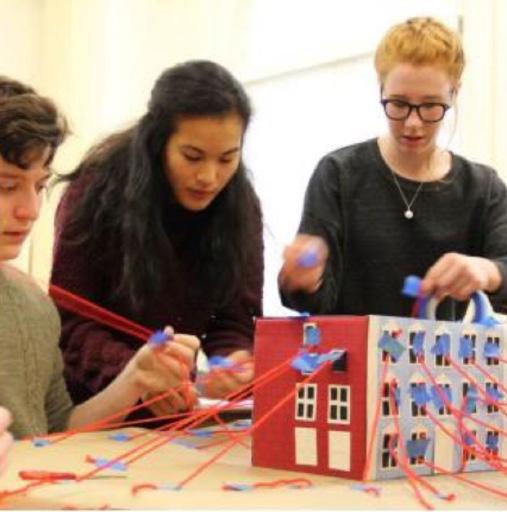
2 minute read
History 200
Cultures in Contact
In this historical simulation, students are introduced to some of the issues and conflicts that created and fostered tensions between English colonists and Native Americans in New England during the 17th century. Students explore differences in how Puritans and Native Americans viewed land ownership, religion, and gender roles, and they participate in a scenario that is an important part of the history of Andover and is depicted on the town seal.
AlterNATIVE Uses
Students use two adze-like tools, one made of stone and the other of metal, to learn how to read material culture as text. By thoroughly investigating the objects, they learn the complex story of the fur trade and the relationship between Native Americans and Europeans in New England.
Pueblo Revolt
In 1680, Ohkay Owingeh leader Po’Pay united people from diverse Pueblo communities and led a bloody revolt to drive the Spanish colonizers from New Mexico. This lesson explores the history and archaeology of the Pueblo Revolt through artifacts from the Peabody Institute and concepts like acculturation, assimilation, syncretism, and catachresis. The lesson emphasizes that Pueblo people have survived Spanish and American colonization and thrive today in their ancient homeland. This program is also available as an online lesson.


HISTORY 200
“The little Spots allow’d them”: Landscapes and Slavery in New England
In Colonial New England, enslaved men and women were able to utilize the architecture and landscapes that their owners had built in order to create a space for themselves that was free from constant surveillance. In this unit, students explore how landscapes can shape human behavior. A hands-on project using archaeological data from Isaac Royall’s Ten Hills Farm in Medford, Mass., illustrates the concept.

The Taíno: The People Who Discovered Columbus
The Taíno are an Indigenous group in the Caribbean, historically situated in Cuba, Hispaniola, Jamaica, Puerto Rico, the Bahamas, and neighboring islands. Today’s Taíno people have preserved their language, foodways, and traditional practices, with groups in Puerto Rico and parts of the continental United States. When Columbus landed in Hispaniola the Taíno population was perhaps in the millions and early records estimate that 85 percent of the population had been lost within a few decades. Archaeologists, anthropologists, and historians still debate the existence of modern Taíno, despite DNA evidence and the persistence of cultural patterns. This lesson introduces students to Taíno history, language, and archaeology, including hands on time with the Peabody’s collection of Taíno material culture.









